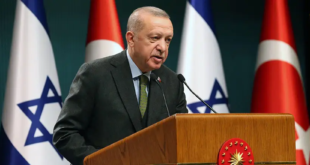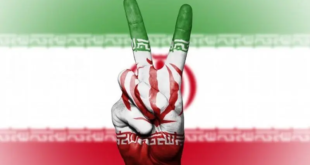MARUN AR-RAS — At home, Lina and her family tread on dangerous ground. The house, partly destroyed by rockets, has two unexploded bombs still buried underneath it.
Israeli soldiers are still controlling the entrance of the hilltop village which was the first area to be occupied in southern Lebanon at the outbreak of the monthlong Israeli offensive that ended August 14.
In the ruins of Marun Ar-Ras, the rocky village that overlooks northern Israel, Lina and her family can hardly make ends meet.
Three weeks ago, the young woman came home, with her three daughters, her disabled husband and her parents-in-law to find their house bombarded and vandalised, and her tobacco fields nearly all dried to the roots.
Under their camouflage tents, Israeli troops are camping on the flanks of the hilltop village, not too far from where a few hundred residents are trying to forget their presence.
Lina has seen tanks on the hilltops.
“They may leave this week, as they have announced, but they may well stay for longer,” she said.
Lina is scared to go out of her house to fetch water from the village communal tank, near the mosque. “I am afraid of being imprisoned” by the Israelis, she said.
The two rockets that hit Lina’s house pierced the roof and landed in the dry well in the foundations of the building.
They are still there, and Lina is awaiting the help of UN or Lebanese army experts to dismantle them.
“The entire house is dangerous, but what can we do? This village is forgotten by all, mainly by the government which gave us nothing,” she said.
Under her dark red veil, Lina grins sadly as she picks a few tobacco leaves, salvaged from the war.
“What remained will only bring us back 200 dollars. This is very little.
“Neighbouring villages are receiving aid. We have not received anything. The government does not know us, as if we are not part of this country,” said Mariam Alawiye, Lina’s mother-in-law.
Hizbollah teams visited Marun Ar-Ras to assess the damage, just like they did in other villages.
But Lina is not convinced.
“They gave promises, but gave us nothing so far. It is not our turn yet,” she said.
The family lives “without water, without electricity most of the time, and without even a taxi to go to the doctor” if need be, she said.
“To cook, we found a domestic gas bottle. But for heating, we have nothing,” said the resident of the village where the nights have started to feel chilly.
Marun ar-Ras, which has suffered continuously since the first Israeli invasion of Lebanon in 1978, was a frontline Hizbollah position between the 2000 Israeli pullout and until the outbreak of the conflict on July 12.
Residents of the village explain that some of the houses in the village had not been rebuilt since past conflicts.
Lina’s family had just finished rebuilding their house when Israel launched the offensive on July 12 after Hizbollah captured two Israeli soldiers to secure a prisoners exchange.
A few houses down the road, Hassan Karnib and his wife are gazing at Israeli soldiers who, from time to time, appear at the top of the hill.
His wife is hoping that the Israelis will leave soon, to allow her family to go out to the fields and plant wheat and vegetables.
But the final Israeli withdrawal has yet to take place, and the Jewish state keeps announcing delays for its pullout from southern Lebanon where Hizbollah fighters melted back into society without accepting to surrender their arms.
“The combatants are here. They are the villagers,” said Mohammed, a 21-year-old student who just returned home to Marun Ar-Ras from Beirut.
Mohamme said he did not fight in the latest conflict.
“But the next time, I will be ready. Our arms are our blood,” he said.
 Eurasia Press & News
Eurasia Press & News



